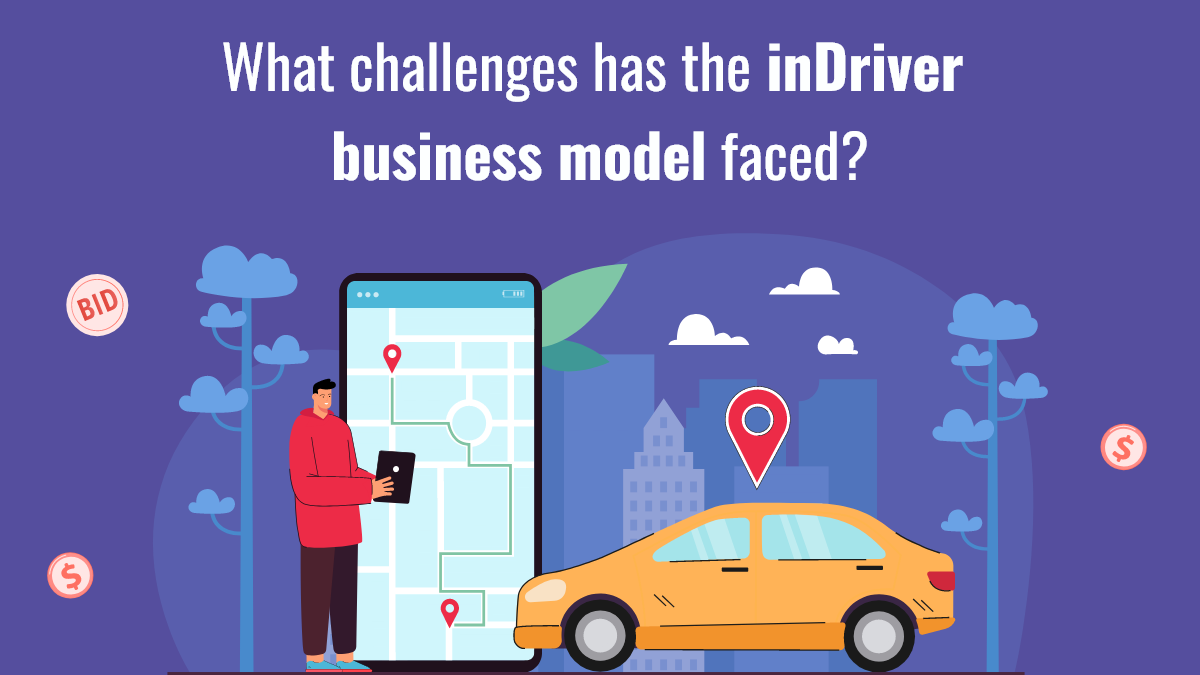The inDriver business model, known for its innovative approach to ride-hailing with dynamic fare negotiation and low commission rates, has encountered various challenges throughout its journey of growth and expansion. While the model has disrupted traditional norms and garnered a loyal user base, several factors have posed significant hurdles. This article explores the key challenges faced by the inDriver business model and how the company has navigated them.
Regulatory Compliance and Legal Issues
One of the foremost challenges for inDriver, like many disruptive tech startups in the transportation sector, has been navigating regulatory frameworks and legal complexities in different markets. Ride-hailing services are often subject to strict regulations, including licensing requirements, insurance obligations, and pricing regulations. In some regions, local authorities have imposed restrictions or attempted to ban ride-hailing platforms altogether, citing concerns over safety, fair competition, and labor practices. These regulatory challenges require inDriver to adapt its operations and collaborate with policymakers to ensure compliance while advocating for regulatory frameworks that support innovation and consumer choice.
Competitive Landscape and Market Penetration
Entering and establishing a foothold in competitive markets dominated by well-established ride-hailing giants presents another significant challenge for inDriver. Competitors with extensive resources, brand recognition, and expansive user bases often wield considerable influence and market power. Moreover, competing platforms may engage in aggressive pricing strategies, promotional offers, and exclusive partnerships to attract and retain customers, posing challenges for inDriver to differentiate itself and gain market share. Strategic market positioning, localized operations, and innovative marketing campaigns are essential strategies for inDriver to effectively penetrate competitive markets and grow its user base.
Driver and Passenger Safety Concerns
Ensuring safety and security for both drivers and passengers is a critical challenge for all ride-hailing platforms, including inDriver. Instances of accidents, assaults, or fraudulent activities involving drivers or passengers can damage reputation and trust in the platform. inDriver must implement robust safety protocols, background checks, and verification processes for drivers, as well as provide features in the app that enhance passenger safety, such as real-time tracking, emergency buttons, and secure payment systems. Proactively addressing safety concerns through technology and policy measures is essential for maintaining user confidence and regulatory compliance.
Operational Scalability and Reliability
As inDriver expands its footprint across diverse geographic regions and scales its operations, maintaining operational scalability and reliability becomes increasingly challenging. The platform must ensure seamless connectivity, efficient dispatching of rides, and responsive customer support across different time zones and market conditions. Scalability issues, such as server capacity, app performance, and driver availability during peak hours, can impact user experience and satisfaction. Investing in robust infrastructure, technology upgrades, and operational efficiencies is crucial for inDriver to sustain growth and deliver consistent service quality globally.
Economic and Market Volatility
The ride-hailing industry is susceptible to economic fluctuations, market volatility, and external factors that affect consumer spending and travel patterns. Economic downturns, currency fluctuations, political instability, and public health crises, such as the COVID-19 pandemic, can significantly impact demand for ride-hailing services and disrupt operational stability. inDriver must adopt agile business strategies, diversify revenue streams, and implement cost-effective measures to mitigate financial risks and adapt to changing market dynamics while maintaining affordability and value for both drivers and passengers.
Conclusion
In conclusion, while the inDriver business model has revolutionized the ride-hailing industry with its innovative features and customer-centric approach, it has faced several challenges along the way. Navigating regulatory compliance, competing in a fierce marketplace, addressing safety concerns, ensuring operational scalability, and navigating economic uncertainties are among the key challenges that inDriver continues to confront. By leveraging technology, fostering strategic partnerships, prioritizing safety and compliance, and maintaining agility in its operations, inDriver aims to overcome these challenges and continue its mission of providing flexible, affordable, and reliable transportation solutions to users worldwide. As the ride-hailing landscape evolves, inDriver remains committed to innovation and resilience in addressing challenges and shaping the future of urban mobility.



